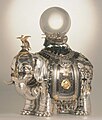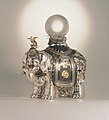Fail:Khalili Collection Japanese Meiji Art M072 CROP.jpg
Ilme

Selle eelvaate suurus: 558 × 599 pikslit. Teised eraldusvõimed: 223 × 240 pikslit | 447 × 480 pikslit | 715 × 768 pikslit | 953 × 1024 pikslit | 2031 × 2182 pikslit.
Algfail (2031 × 2182 pikslit, faili suurus: 1,41 MB, MIME tüüp: image/jpeg)
Faili ajalugu
Klõpsa kuupäeva ja kellaaega, et näha sel ajahetkel kasutusel olnud failiversiooni.
| Kuupäev/kellaaeg | Pisipilt | Mõõtmed | Kasutaja | Kommentaar | |
|---|---|---|---|---|---|
| viimane | 26. november 2021, kell 14:02 |  | 2031 × 2182 (1,41 MB) | MartinPoulter (KC WIR) | Uploaded a work by Khalili Collections from Cropped from File:Khalili Collection Japanese Meiji Art M072.jpg with UploadWizard |
Faili kasutus
Seda faili ei kasuta ükski lehekülg.
Globaalne failikasutus
Järgmised muud vikid kasutavad seda faili:
- Faili kasutus vikis de.wikipedia.org
- Faili kasutus vikis en.wikipedia.org
- Faili kasutus vikis ms.wikipedia.org
- Faili kasutus vikis sl.wikipedia.org
- Faili kasutus vikis www.wikidata.org





